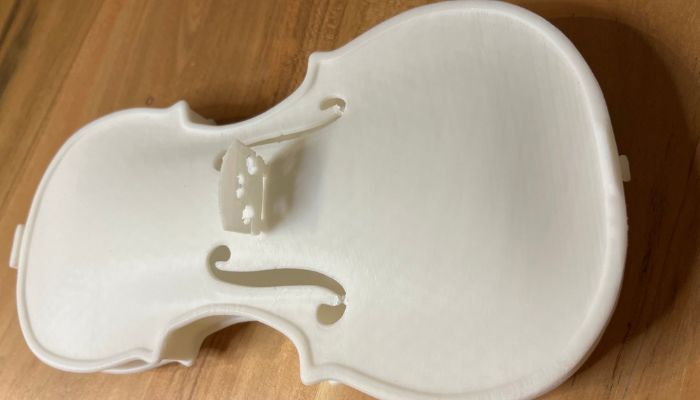3D Printed Violins Could Help Bring Music to All

Music has been a part of humanity for as long as we have been recording history. And though it has changed much over the years, some things have stayed constant. For example the types of instruments and how they are made. Take the violin for example. To this day, it is one of the most popular instruments and it is still made using traditional processes. However, that does not mean that that is the only way to create the instrument. In the latest innovation in the field, AVIVA Young Artists Program recently unveiled that they are 3D printing low-cost, durable violins for music students.
It is no secret that violins are expensive to buy. While professional violinists often have instruments that cost between $2000 and $10,000, it is possible to have one that cost millions depending on how they were and who made them. Indeed, even basic violinists for students often cost $1000 or more. This can make it hard to for many to access the instrument, especially for beginners and music classrooms. However, AVIVA Young Artists Program is hoping to rectify this.

The body of the violin (photo credits: AVIVA Young Artists)
The program started as an experiment in 2012 to reach underserved communities through the first virtual Suzuki-based program. And now it is grown to be the premier web-based young artists program for violinists worldwide. It seeks not only to connect people to music worldwide, but also to grow and innovative. And their 3D printed violin is a key part of that mission.
Introduced for the first time at the Acoustical Society of America’s Conference on December 6th, 2022, the 3D printed violin not only works correctly but was able to be made at the fraction of the cost of a traditional instrument. The printing costs for each one were only $7 while assembly costs came out to under $30. Considering that even low-cost beginner violins cost around $500, this is a significant reduction in price and would make these beautiful instruments more accessible to more people.
But what is the 3D printed violin like? According to a press release from the Acoustical Society of America, the body is made of a plastic polymer material in the same manner as a traditional acoustic violin, designed specifically to produce a resonant tone. Meanwhile the neck and fingerboard are printed in smooth ABS plastic in order to be more comfortable in the musician’s hands. Moreover, the resulting violin apparently produces a darker, more mellow sound than traditionally made instruments.
And although it is not yet available for purchase, the violin has already been tested. An early iteration allowed Mary-Elizabeth Brown, the director of the AVIVA Young Artists Program, to play Harry Stafylakis’ concerto “Singularity” which was written explicitly to be played on 3D printed instruments. Brown concludes:
“Our goals were to explore the new sound world created by using new materials, to leverage the new technology being used in other disciplines, and to make music education sustainable and accessible through the printing of more durable instruments. The next step is to explore design modifications as well as efforts to lower the costs of production while making such instruments more widely available, especially in the realm of education.”
You can find out more in the press release from the Acoustical Society of America HERE. What do you think of these 3D printed violins? Let us know in a comment below or on our LinkedIn, Facebook, and Twitter pages! Don’t forget to sign up for our free weekly Newsletter here for the latest 3D printing news straight to your inbox! You can also find all our videos on our YouTube channel.
*Cover Photo Credits: AVIVA Young Artists






